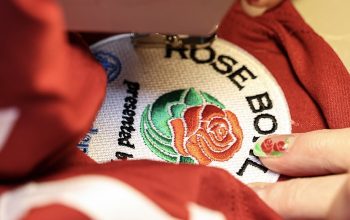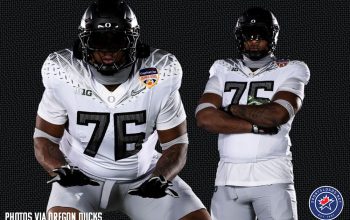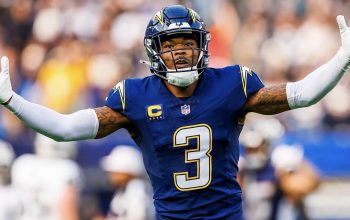
The Super Bowl will sail into Tampa’s Raymond James Stadium on February 7, 2021, doing so with a host committee logo full of local ties and community nods.
“We feel like there is a lot of thought behind it, a lot of brainstorming behind it,” says Rob Higgins, Tampa Bay Super Bowl Host Committee president and chief executive officer. “We are naturally thrilled with the result and have received a ton of positive feedback.”
The logo, which features the red and pewter of the NFL’s Buccaneers and shades of blue to tie to the water theme the host committee wants to showcase both in the logo and throughout fan week events leading up to Super Bowl LV, has a unique font and a singular ship with a prominent sail and the hull formed from a football.

Working with local agency Schifino Lee, Higgins says the process started with plenty of brainstorming and ideating in terms of what they were trying to accomplish with the logo and how they wanted to portray the community. The group used a set of words — progressive, fluid, warm, energetic, dynamic — to lead the initial designs. Once a handful of concepts were presented, the initial concept of what became the final logo was “the one we immediately gravitated toward and it just became a process over the next few months of a bunch of different tweaks and variations to land on the logo now, which we absolutely love.”
The theme of water ripples throughout the logo.
“Naturally we wanted something that would lay really heavily into water specifically,” Higgins says, citing the city’s popular Tampa Riverwalk and new downtown Water Street development. “With all of those different things, we felt like water was a really important component to tie in.”
The font was inspired by the Buccaneers font, but with a nautical twist. “We see the Tampa Bay text as big, bold and proud and we see that text almost like the wind that propels the sails and the ship forward,” Higgins says.
The ship serves as a nod to the area’s rich nautical history, the local Gasparilla Pirate Festival and, of course, the iconic ship that lives inside Raymond James Stadium.

“Water is such a big backbone to our Super Bowl 55 fan experience, and we want it to be a big part of the logo,” Higgins says.
Tying to the community, the five sails represent the community hosting five Super Bowls over time and the five laces on the football, Higgins says, binds the host committee to its five social legacy pillars. Of course, two “fives” couple up to make a 55, a direct tie to Super Bowl LV.
One of Higgins’ favourite components, though, even with all the thought throughout, remains the forced perspective and dimensionality that reflects a fast-moving and forward-facing community. “If you look at the logo from different angles you can see it in varying degrees,” he says. “I like that the best. I like how versatile it is and to me, I know it is new, but it doesn’t seem to ever get old.”
As the NFL itself has remained tied to the silver templated logo for each of the Super Bowl games, it opens the opportunity for host committees to let furl their own set of creativity, although the process still includes feedback from the NFL. “Hosting the Super Bowl is such a monumental opportunity for any community and the fact we are getting a chance to host our fifth, we wanted a mark that would help leave a lasting legacy when it comes to this event,” Higgins says. “I am excited.”

Even though the sail theme was chosen early in the process, Higgins says that doesn’t mean it was the only design considered. “We tinkered with different things, like the sun and palm trees and things like that which are more traditional in nature when it comes to event logos for our community,” he says. “As we really went down this path, we were headed in a great direction with this concept specifically versus needing to lean into more traditional elements.”
By turning to a community focused on water, the Tampa Bay Super Bowl Host Committee really worked to put some wind in the sails of Super Bowl design.
Studio Stories is a regular column from Tim Newcomb that explores the stories behind some of the designs dominating the sports landscape. Follow Tim Newcomb on Twitter at @tdnewcomb.











